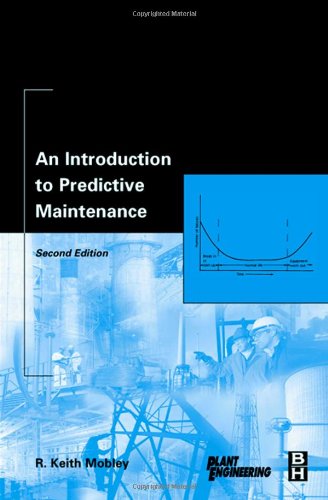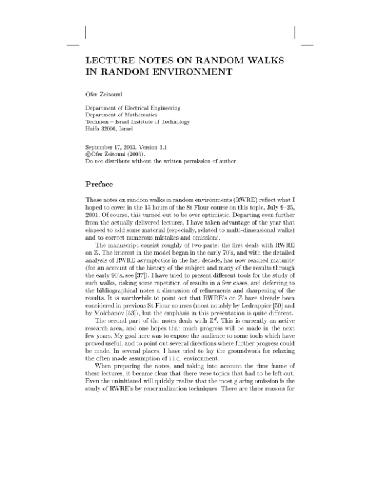R. Keith Mobley President and CEO of Integrated Systems Inc.9780750675314, 0-7506-7531-4
Table of contents :
1 Impact of Maintenance……Page 10
1.1 Maintenance management methods……Page 11
1.2 Optimizing predictive maintenance……Page 19
2 Financial Implications and Cost Justification……Page 32
2.1 Assessing the need for condition monitoring……Page 33
2.2 Cost justification……Page 34
2.3 Justifying predictive maintenance……Page 38
2.4 Economics of preventive maintenance……Page 41
3.1 Maintenance mission……Page 52
3.2 Evaluation of the maintenance organization……Page 53
3.3 Designing a predictive maintenance program……Page 59
4 Benefits of Predictive Maintenance……Page 69
4.1 Primary uses of predictive maintenance……Page 70
5 Machine-Train Monitoring Parameters……Page 83
5.1 Drivers……Page 84
5.2 Intermediate drives……Page 87
5.3 Driven components……Page 95
6.1 Vibration monitoring……Page 108
6.2 Themography……Page 114
6.3 Tribology……Page 117
6.5 Ultrasonics……Page 120
6.6 Other techniques……Page 121
7.1 Vibration analysis applications……Page 123
7.2 Vibration analysis overview……Page 126
7.3 Vibration sources……Page 131
7.4 Vibration theory……Page 134
7.5 Machine dynamics……Page 141
7.6 Vibration data types and formats……Page 155
7.7 Data acquisition……Page 161
7.8 Vibration analyses techniques……Page 170
Appendix 7.1 Abbreviations……Page 174
Appendix 7.2 Glossary……Page 175
Appendix 7.3 References……Page 180
8.1 Infrared basics……Page 181
8.2 Types of infrared instruments……Page 183
8.3 Training……Page 184
8.4 Basic infrared theory……Page 185
8.5 Infrared equipment……Page 187
8.8 Types of infrared problems……Page 188
Appendix 8.2 Glossary……Page 192
Appendix 8.3 Electrical terminology……Page 196
Appendix 8.4 Materials list……Page 202
9 Tribology……Page 211
9.1 Lubricating oil analysis……Page 212
9.2 Setting up an effective program……Page 217
10 Process Parameters……Page 226
10.1 Pumps……Page 227
10.2 Fans, blowers, and fluidizers……Page 234
10.4 Compressors……Page 238
10.6 Dust collectors……Page 249
10.7 Process rolls……Page 250
10.8 Gearboxes/reducers……Page 251
10.11 Control valves……Page 258
10.12 Seals and packing……Page 260
11.1 Ultrasonic applications……Page 265
11.2 Types of ultrasonic systems……Page 266
11.3 Limitations……Page 267
12 Visual Inspection……Page 268
12.1 Visual inspection methods……Page 269
12.2 Thresholds……Page 272
13.1 It’s not predictive maintenance……Page 276
14 Failure-Mode Analysis……Page 294
14.1 Common general failure modes……Page 295
14.2 Failure modes by machine-train component……Page 310
15.1 Goals, objectives, and benefits……Page 334
15.2 Functional requirements……Page 335
15.3 Selling predictive maintenance programs……Page 339
15.4 Selecting a predictive maintenance system……Page 343
15.5 Database development……Page 352
15.6 Getting started……Page 357
16 A Total-Plant Predictive Maintenance Program……Page 361
16.1 The optimum predictive maintenance program……Page 362
16.2 Predictive is not enough……Page 365
17.1 Trending techniques……Page 398
17.2 Analysis techniques……Page 399
17.4 Additional training……Page 401
17.6 Contract predictive maintenance programs……Page 402
18.1 What is world-class maintenance?……Page 403
18.2 Five fundamentals of world-class performance……Page 404
18.3 Competitive advantage……Page 405
18.4 Focus on quality……Page 406
18.5 Focus on maintenance……Page 407
18.6 Overall equimpment effectiveness……Page 411
18.7 Elements of effective maintenance……Page 415
18.8 Responsibilities……Page 421
18.9 Three types of maintenance……Page 422
18.10 Supervision……Page 428
18.11 Standard procedures……Page 433
18.12 Workforce development……Page 435
Index……Page 444







Reviews
There are no reviews yet.